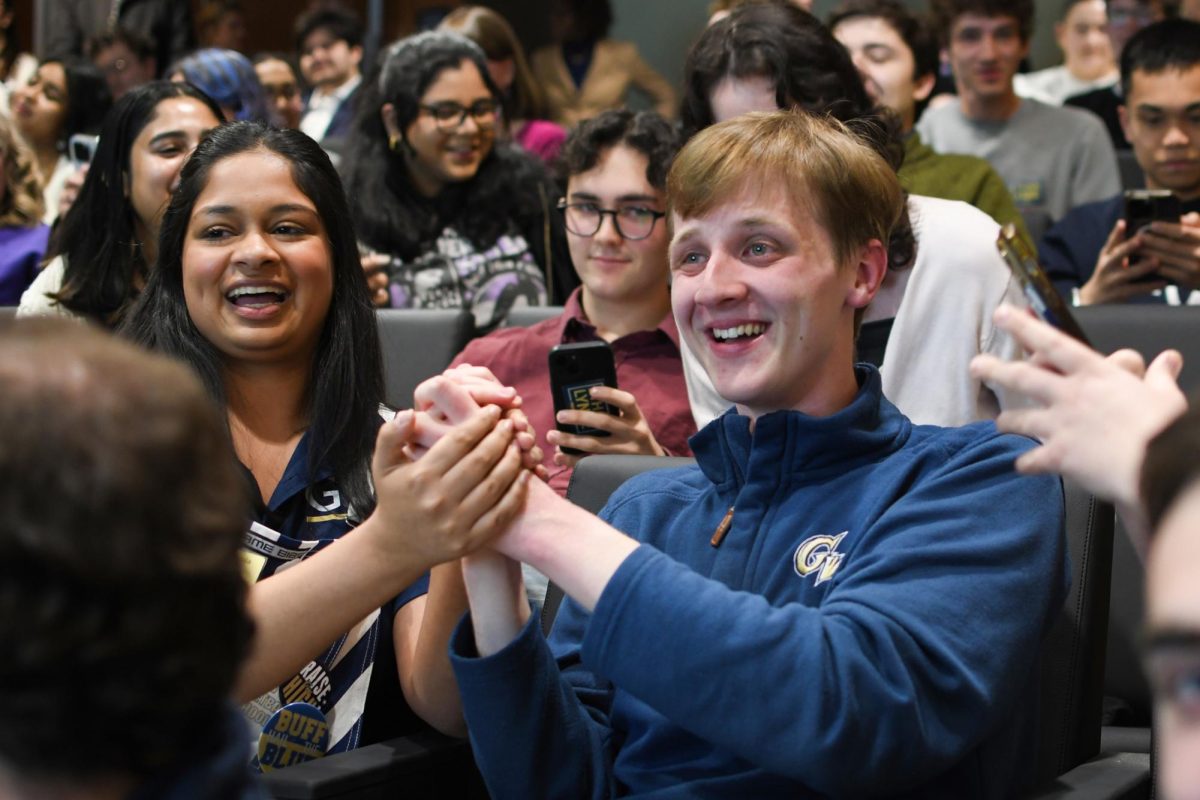GW’s faculty salaries have climbed more rapidly than many of its private peers’ over the past decade, though they still fall toward the middle of the pack overall, according to a Hatchet analysis of national data released Monday.
Salaries for the University’s associate, assistant and full professors rose by 12 and 17 percent, adjusted for inflation, since 2003 – a spike that might be attributable in part to GW’s stable footing in the wake of a nationwide recession. But the University is still playing catch-up with its peers as it looks to build a stronger, more research-inclined faculty core.
That pay increase is especially noteworthy during the annual hiring season for new faculty. Salaries, as well as location, startup packages and reputation, are some of the University’s most important draws as it looks to build a stronger faculty core.
GW paid full-time faculty about 3 percent more on average this year than last, a rate higher than inflation. Full professors earned an average $156,000, while associate and assistant professors earned $106,100 and $86,900, respectively, this year. Those salaries still mostly fall in the middle range among the 14 private universities that GW calls its peers.
The average salary for full professors is still about $11,000 less than the average salary at private doctoral universities, a trend consistent with previous years.
But only four of the 14 universities that GW reports as its peers to the Department of Education had raised average salaries more over the last decade. Those include Emory, Georgetown, Miami and Washington University in St. Louis.
And GW faculty salaries rose much more than those at six public schools that often compete with the University for faculty hiring talent. Those public schools – Ohio State University, University of Florida, University of Texas at Austin, Penn State University, Washington State University and the University of Maryland – raised salaries only by about 9 percent since 2003.
Vice Provost for Faculty Affairs Dianne Martin said the University aims to pay faculty a higher salary than 80 percent of U.S. universities do, a goal it mostly surpassed this year. GW paid assistant professors, the lowest position on the tenure track, an $86,900, salary, which was more than 79 percent of universities.
“We realize that the D.C. area is expensive relative to other university towns and understand the importance of offering competitive salary and benefits packages to attract top new faculty members,” she said.
Professor pay has increased in the two decades since the University first set the 80 percent bar in 1996. The progress also pushes back against a 2007 self-study, in which groups of professors said salaries were “not compensating at a world-class level, even with the recent increases in salary.”
But the University’s progress over its competitors in recent years shows that GW has been able to bounce back more quickly since the recession, especially over public schools.
In this year’s report, researchers at the American Association of University Professors highlighted the growing disparity of pay between private and public institutions as state budgets shrink.
John Curtis, director of the department of research and public policy at AAUP, said in an interview that private schools were able to weather the economy’s slowdown more easily than public institutions, which have suffered from declining state funding.
“That’s made it even more difficult for public colleges to keep up in terms of faculty salaries they can pay,” Curtis said, adding that private universities have found different revenue sources, allowing them to bounce back faster.
Although the recession concluded in 2009 for the U.S. economy as a whole, Curtis said it continues to linger in the world of higher education.
Executive Vice President and Treasurer Lou Katz has said previously that GW was able to largely avoid the financial difficulties seen in the wider economy due to sizable cash reserves and dependence on tuition dollars, not a large endowment.






